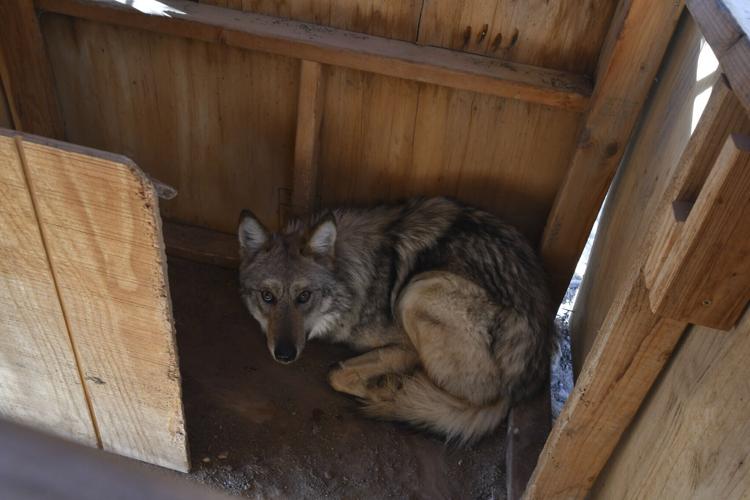Two Mexican gray wolves have found their way into the forest near Flagstaff, but federal authorities plan to interrupt their road trip.
The U.S. Fish and Wildlife Service announced Thursday that it intends to capture the endangered animals and move them back into the federally designated Mexican Wolf Experimental Population Area, which covers a vast swath of eastern Arizona and western New Mexico south of Interstate 40.
Government trackers already caught one of the wolves last week on U.S. Forest Service land northwest of Flagstaff. According to the Fish and Wildlife Service, that female was given a health check and fitted with a tracking collar, before being turned loose again in hopes of leading authorities to her travel companion.
Conservationists want the animals left alone.
“If we let our dispersing wolves live their own lives, we could learn much about wolves and habitat connectivity,” said Claire Musser, executive director of the Grand Canyon Wolf Recovery Project in Flagstaff. “These wolves show us their needs, and our agencies must listen.”
Tucson-based wolf advocate Greta Anderson said these two animals are simply doing what comes naturally to them: searching for mates and establishing new territories in suitable habitat.
“What’s unnatural is the agencies’ intention to use the new collar data to relocate the wolves south of their artificial boundary of Interstate 40,” said Anderson, who serves as deputy director of Western Watersheds Project.
But Arizona Game and Fish Commissioner Jeff Buchanan said wildlife managers are trying to keep the wolves south of I-40 for reasons of "simple biology."
"The Mexican wolf is a sub-species of northern gray wolf, and there are packs of northern gray wolves in both Colorado and Utah," Buchanan explained in an email. "If Mexican wolves expand their territories north of I-40, it’s only a matter of time before they link up and breed with northern gray wolves. The results would be viable young and potentially the loss of the Mexican wolf as a separate subspecies."
Wildlife officials have a similar policy that calls for northern gray wolves found in Arizona to be captured and sent back to Colorado or Utah, he said. "We are working to protect their status as a subspecies rather than destroy it."
Mexican wolves were once common in the southwestern U.S. and Mexico, but they were hunted, trapped and poisoned to near-extinction by the 1970s.
Captive-bred Mexican wolves were first reintroduced to eastern Arizona and western New Mexico in 1998 as part of a cooperative effort among nine federal, state and tribal agencies led by the Fish and Wildlife Service. Since then, the wolf population has grown to at least 257 animals.
This isn’t the first time Mexican wolves have been targeted for relocation after wandering outside the experimental area.
In 2022, a female wolf was caught near Taos, New Mexico, and returned to eastern Arizona, only to make her way back to the same part of northern New Mexico the following year. She has since been captured again and paired in captivity with a potential mate for the second time.
Thursday’s news release from the Fish and Wildlife Service included a reminder that Mexican wolves are protected under the Endangered Species Act, even if they stray north of I-40 or elsewhere outside the designated recovery area.
It’s a federal crime to kill, harm or harass a Mexican wolf, unless the animal actively poses a threat to human safety, agency officials said.
This footage was filmed and produced 12 April 2023. In 1977 there were only 13 Mexican Grey Wolfs left in the United States. Their habitat was in the deserts of Arizona, New Mexico and ChihuahuaMexico. In that same year a Univeristy of California biologist and his wife purchased a 50 acers plot of land overlooking the Anza-Borrego Desert near the San Diego County mountain town of Julian. Eventually the property was turned into the California Wolf Center. In 2022 US Fish and Wildlife Service counted 241 wolves in the wild, this was the first time the count passed 200. Mexican Grey Wolf peering through the chain link fence at the California Wolf Center, Julian, USA. **NO SALES IN SAN DIEGO-SAN DIEGO OUT**





